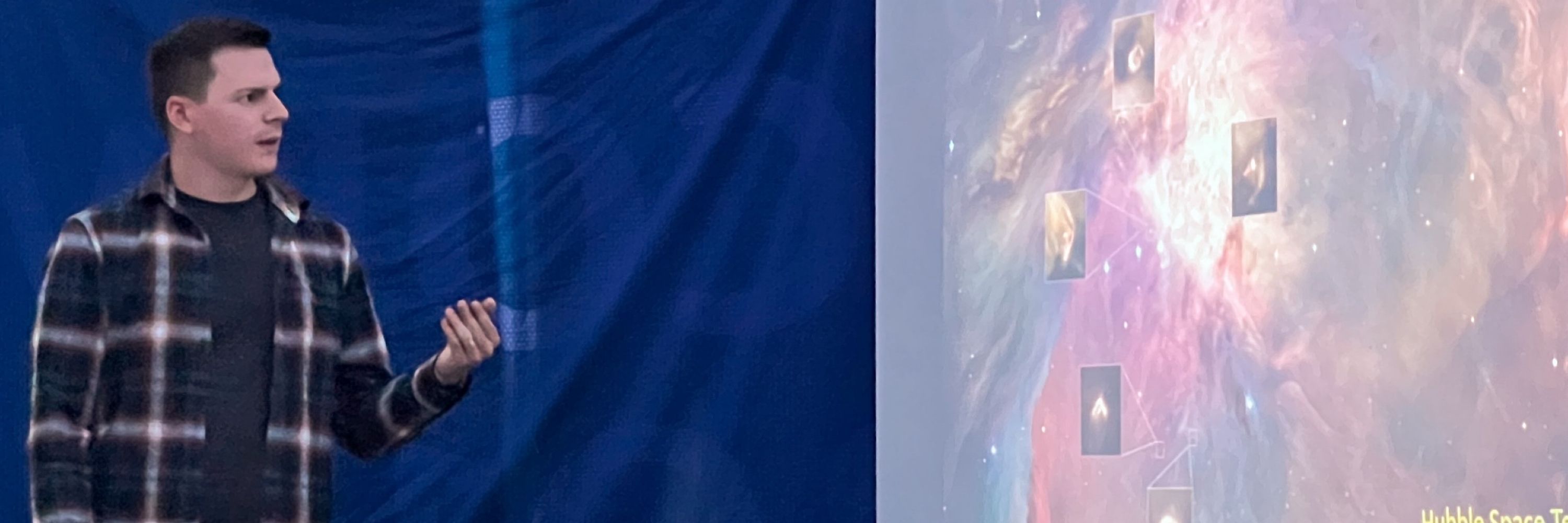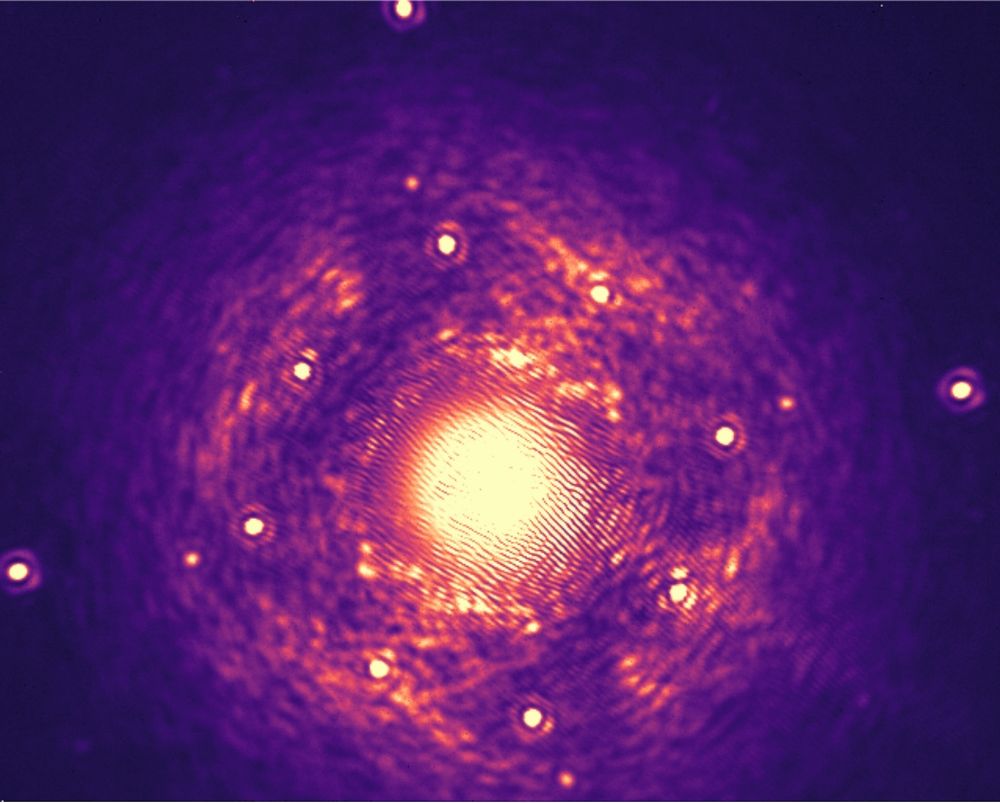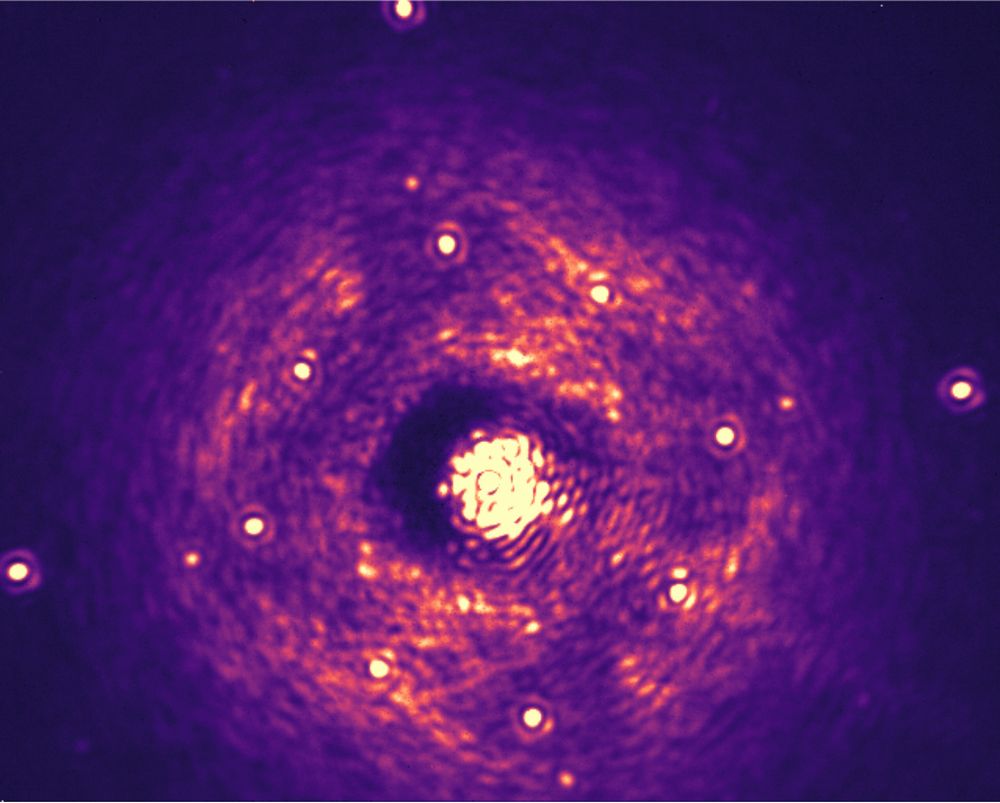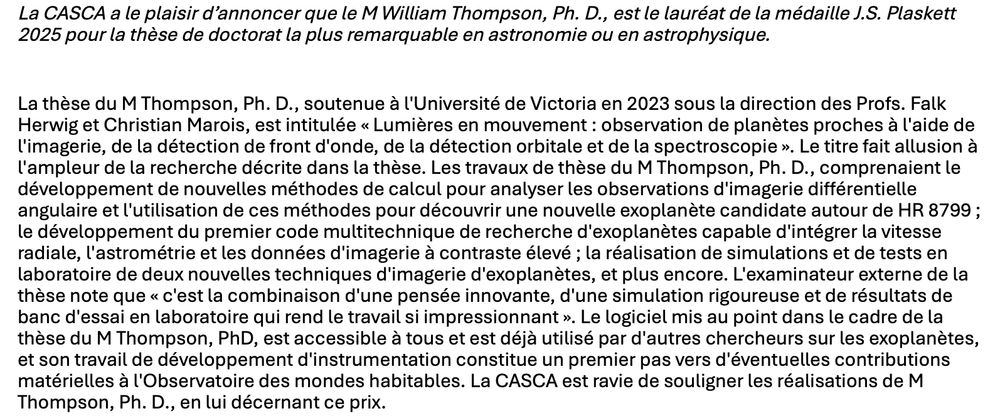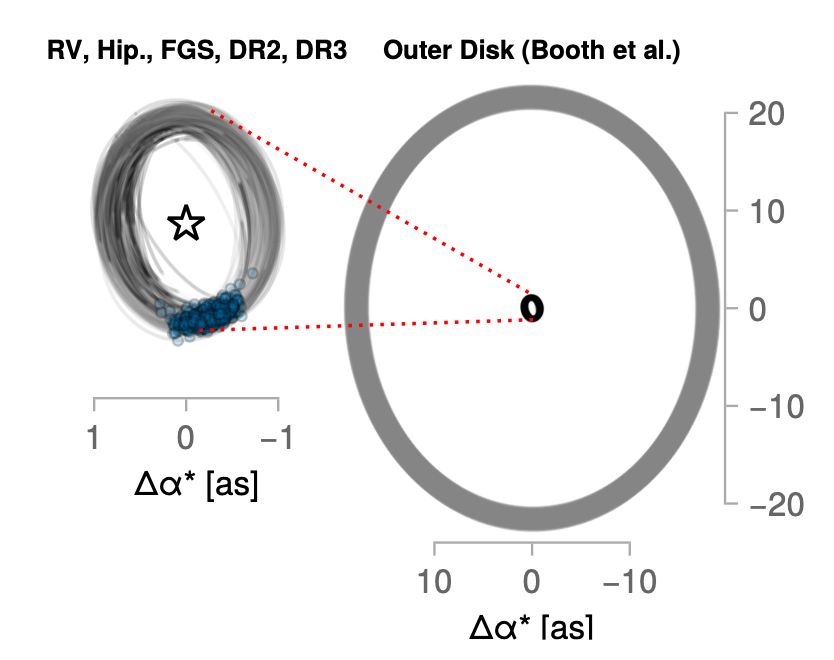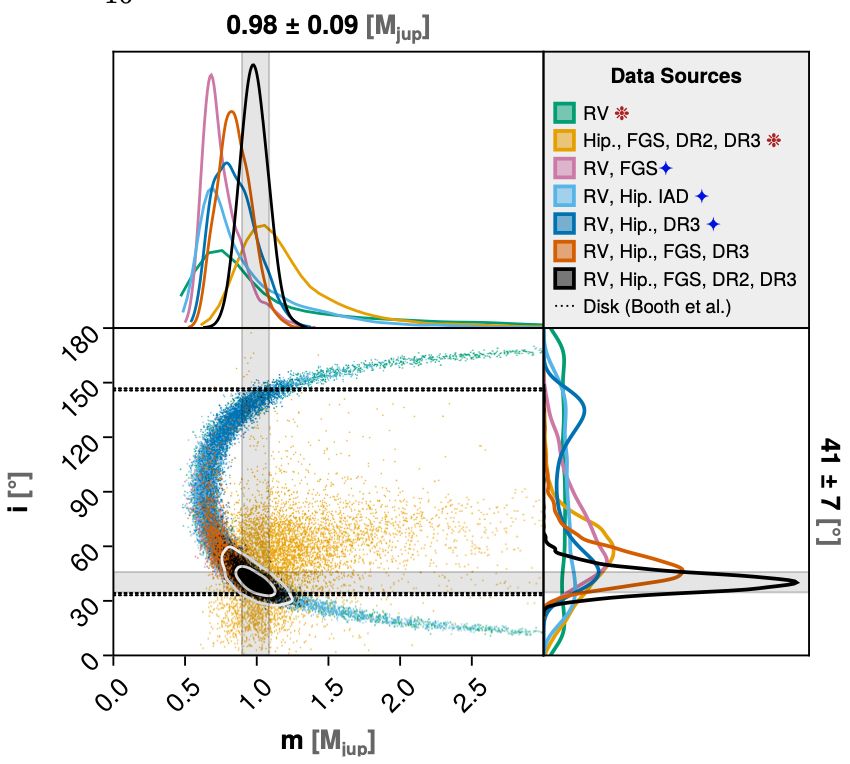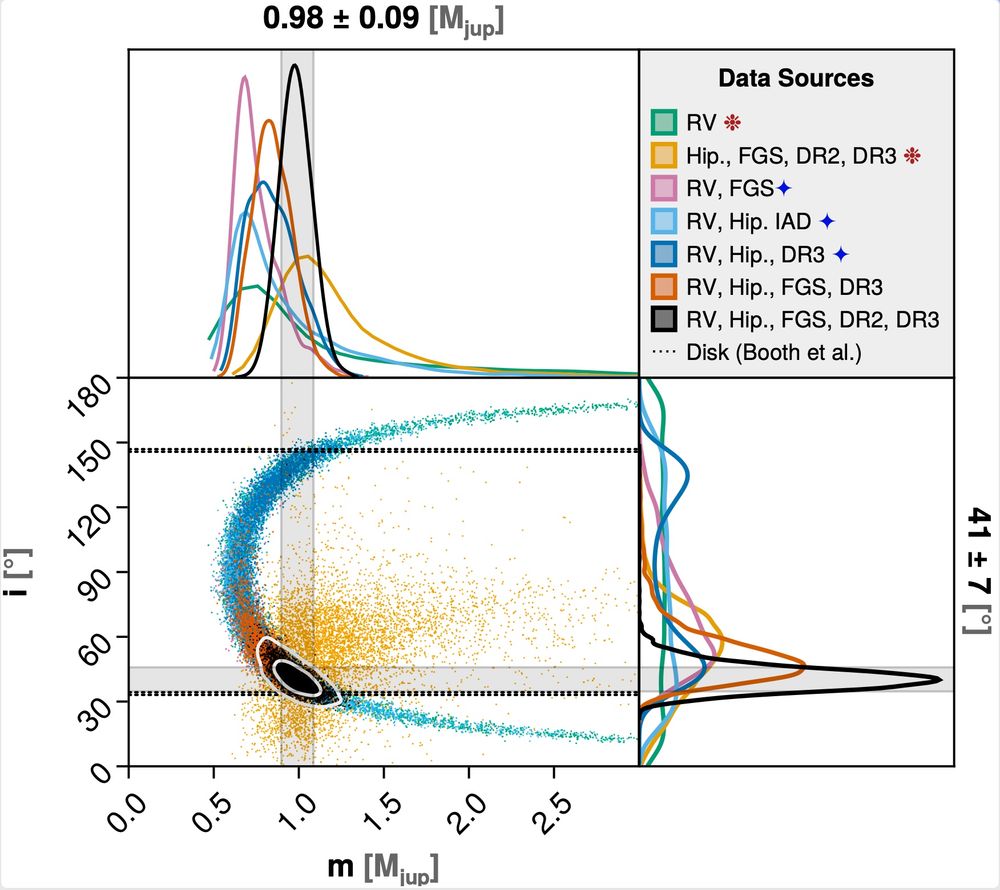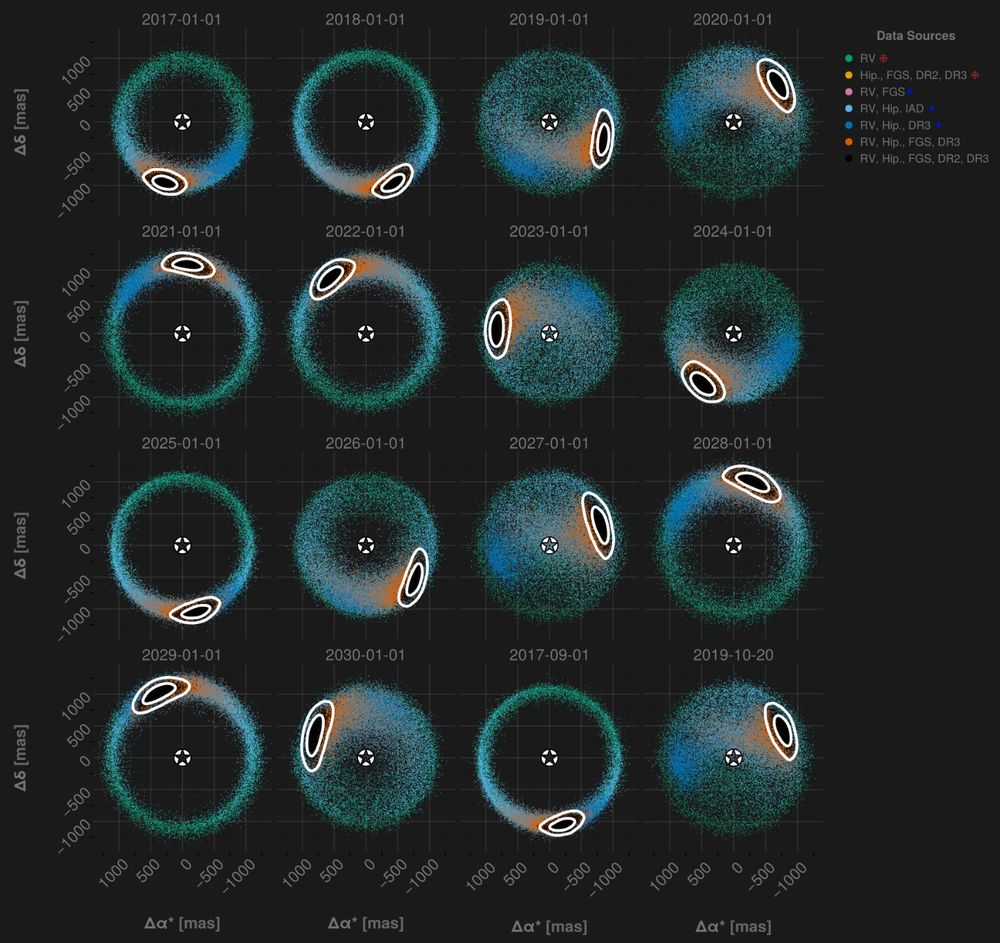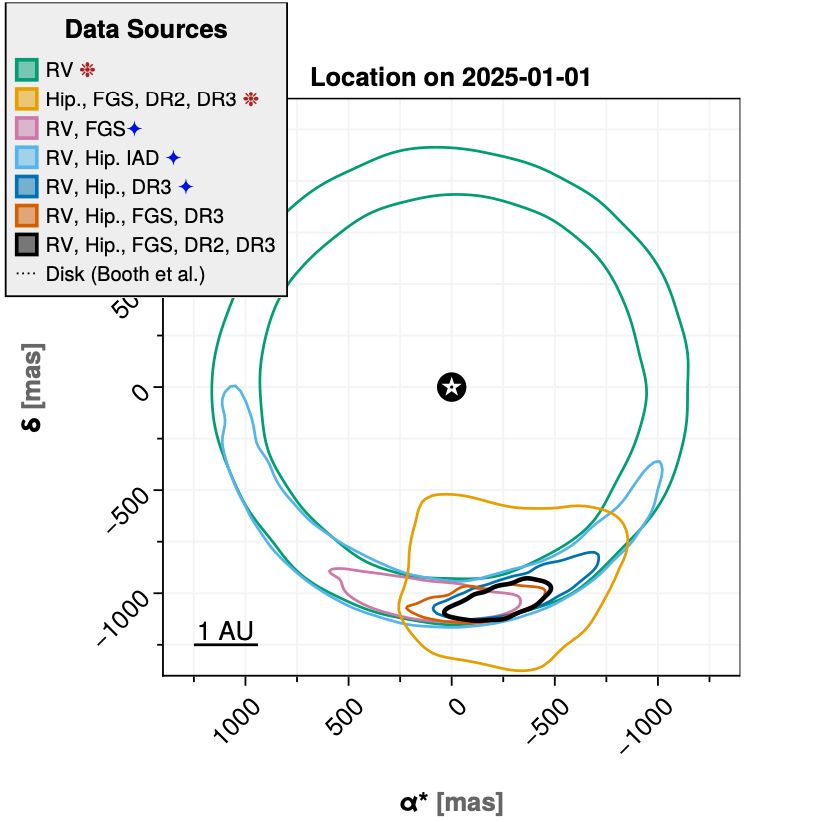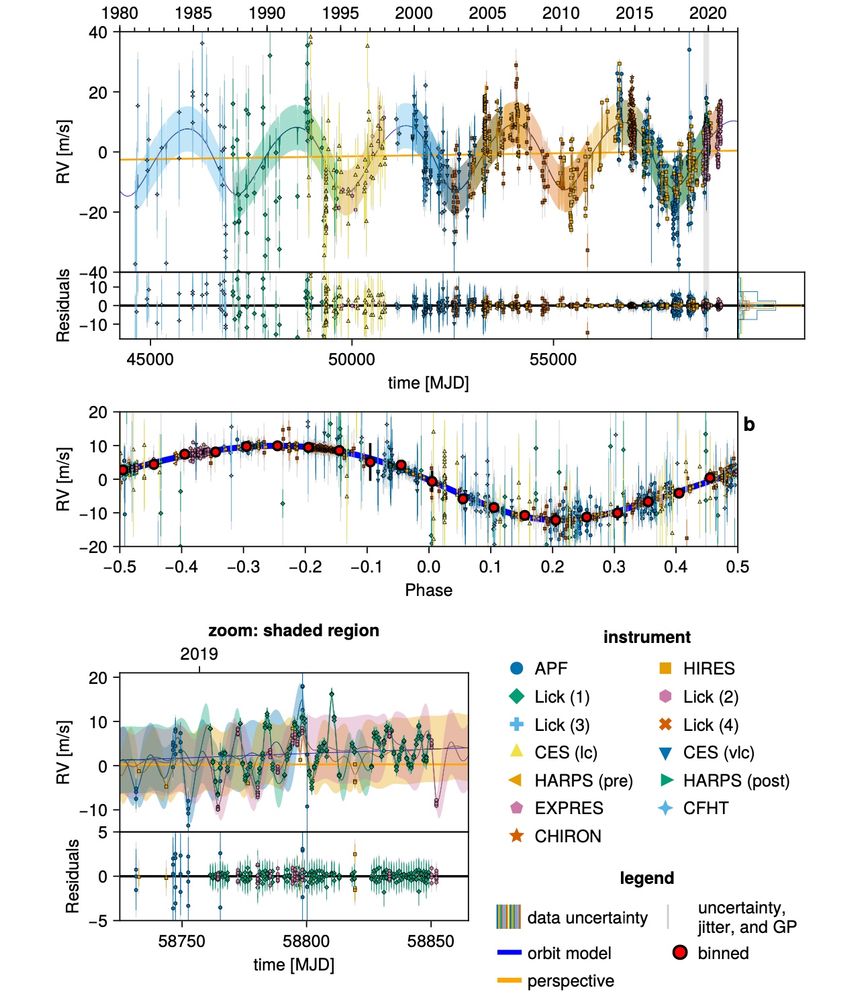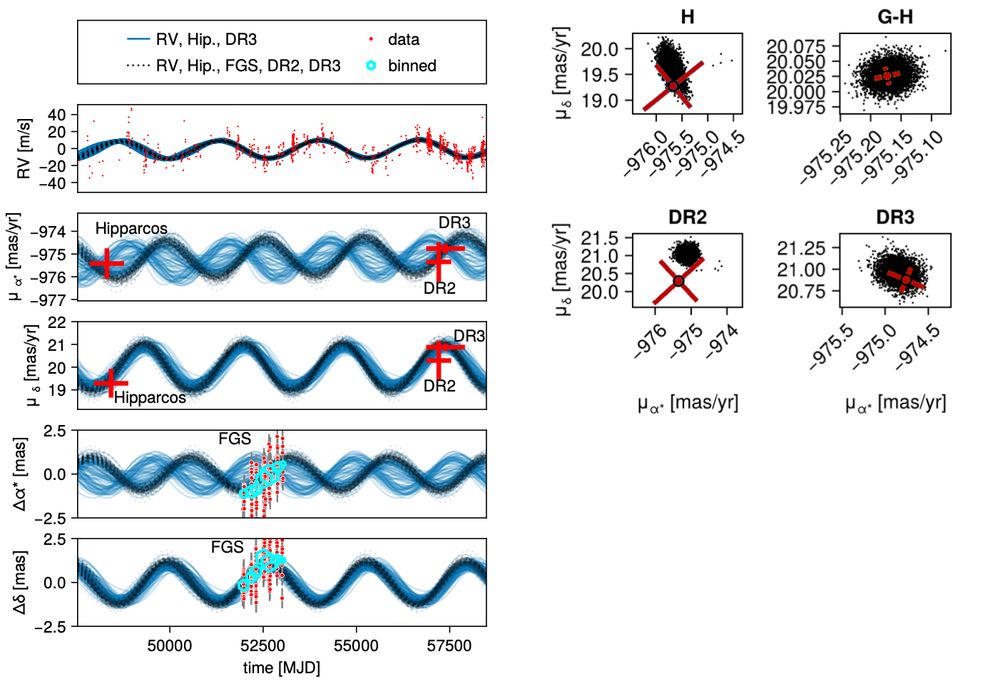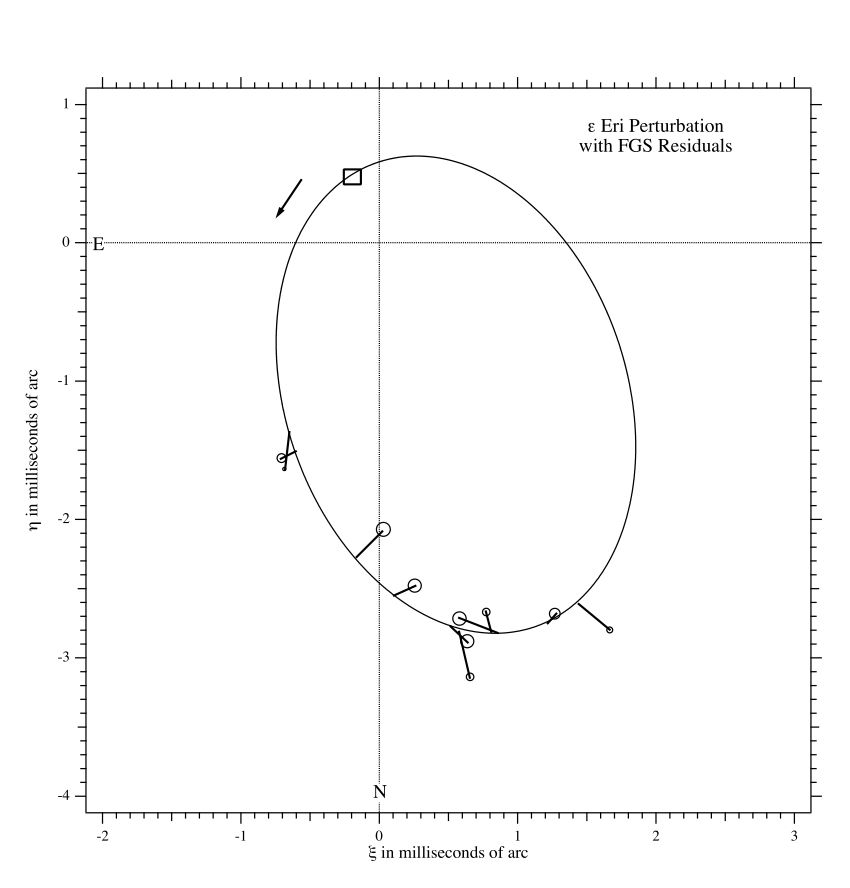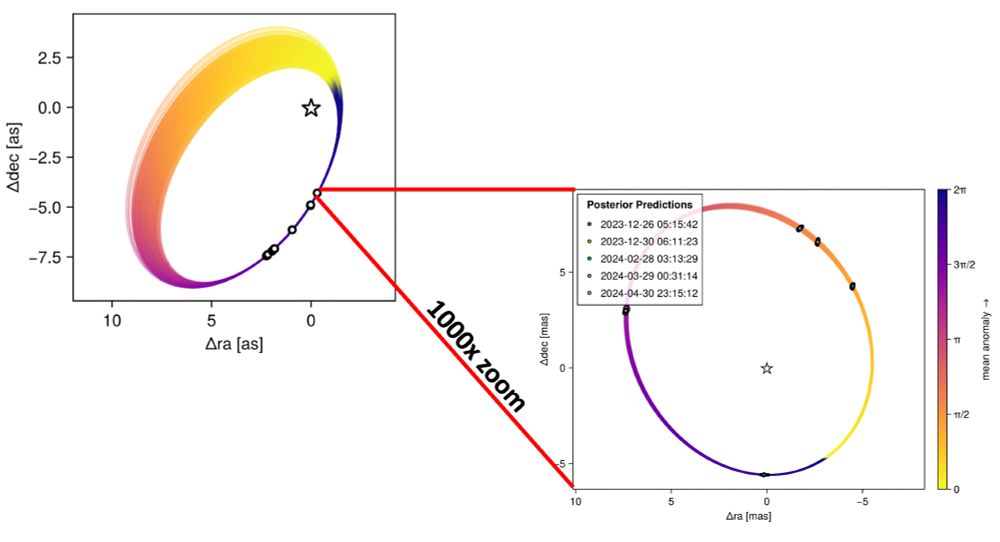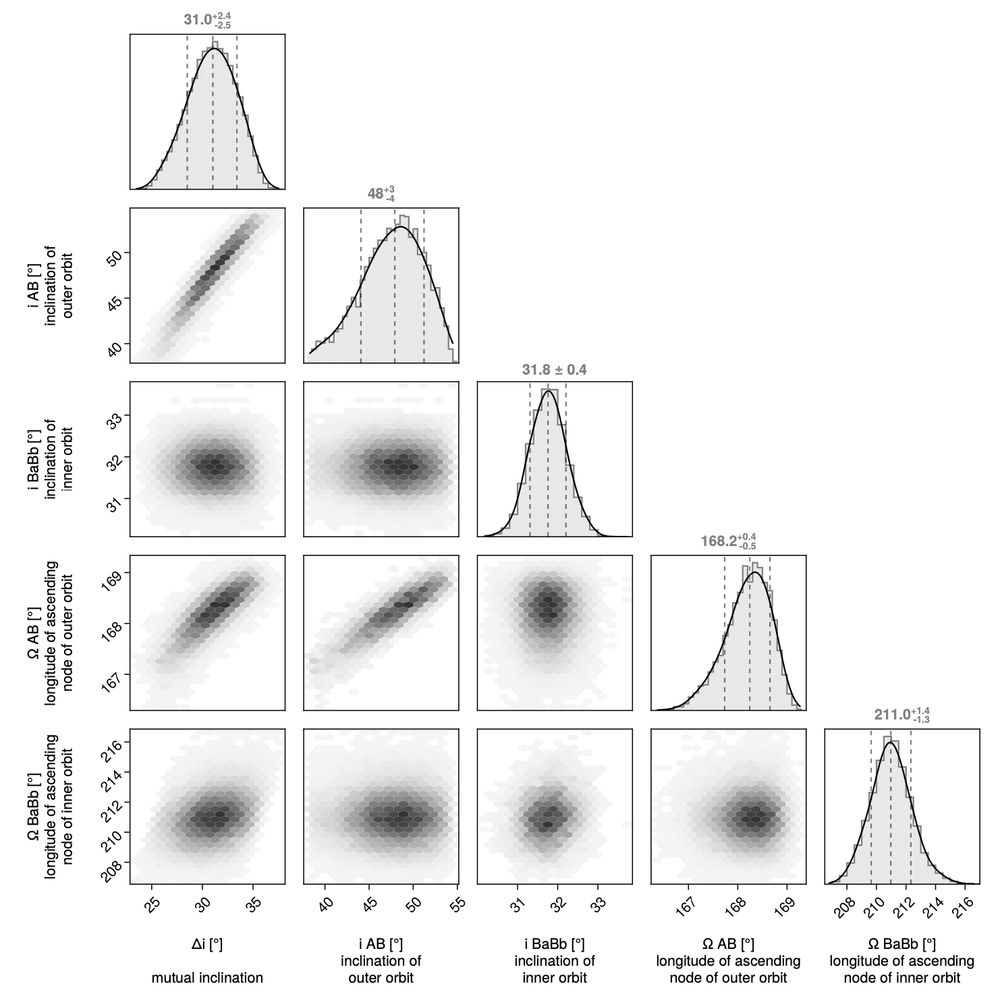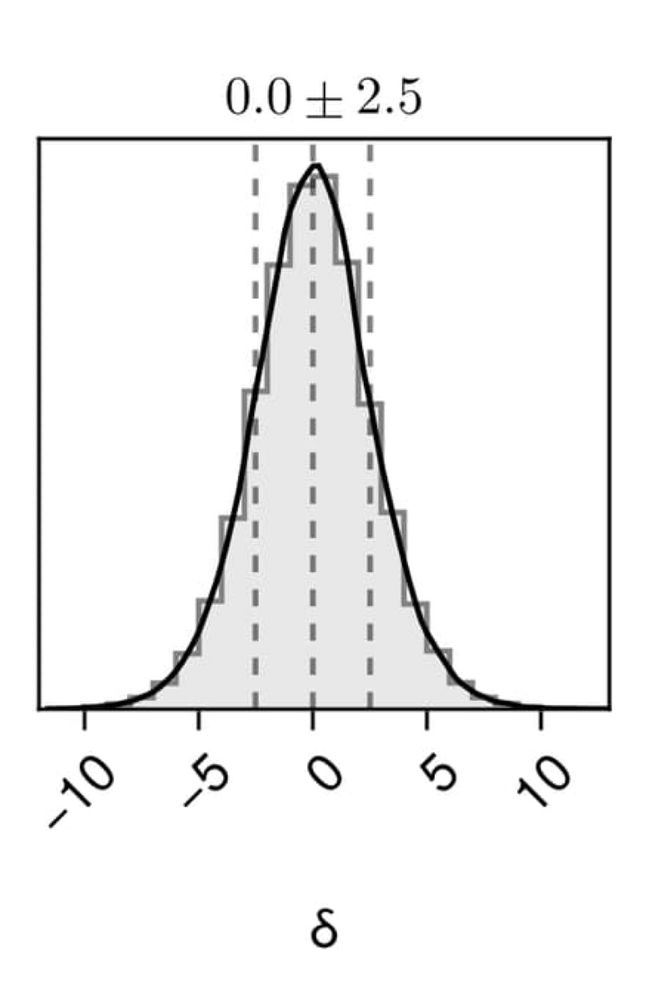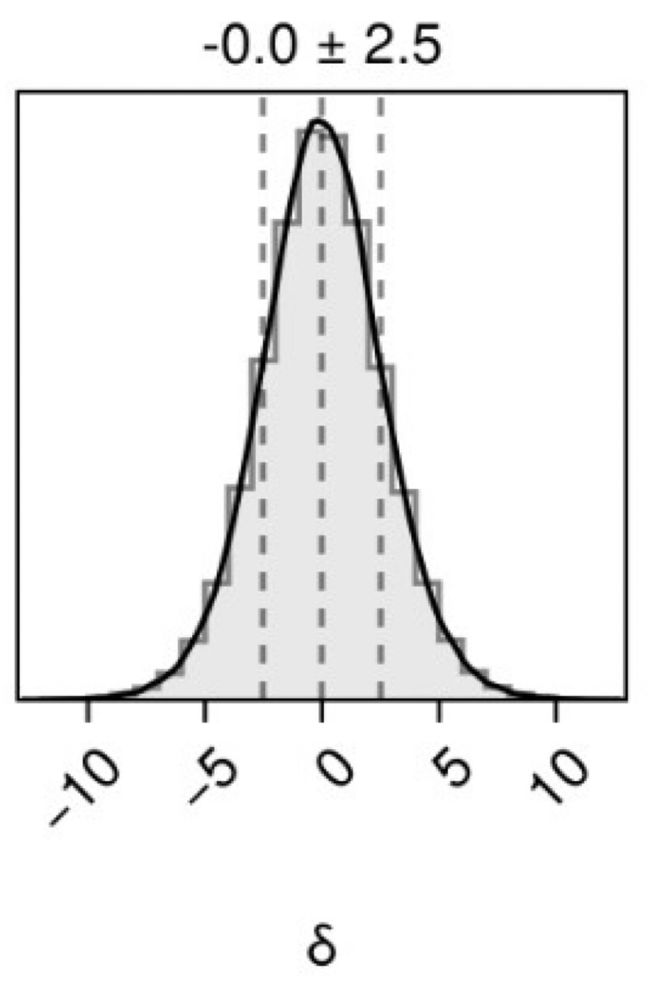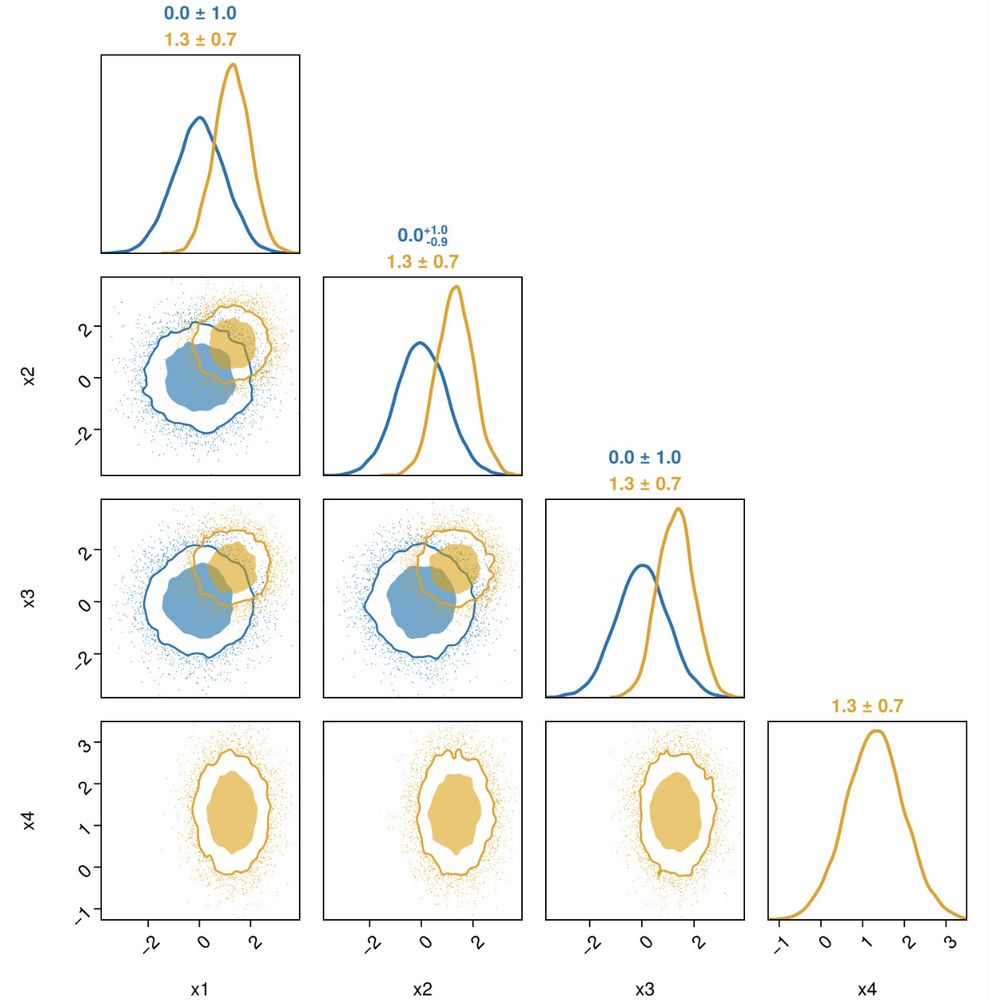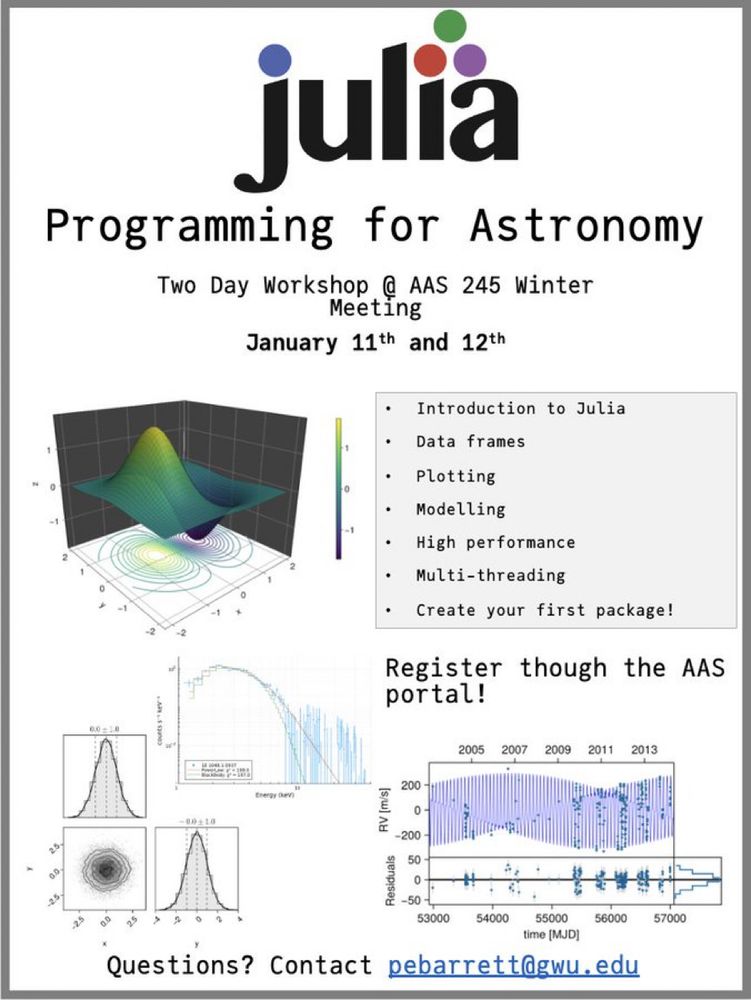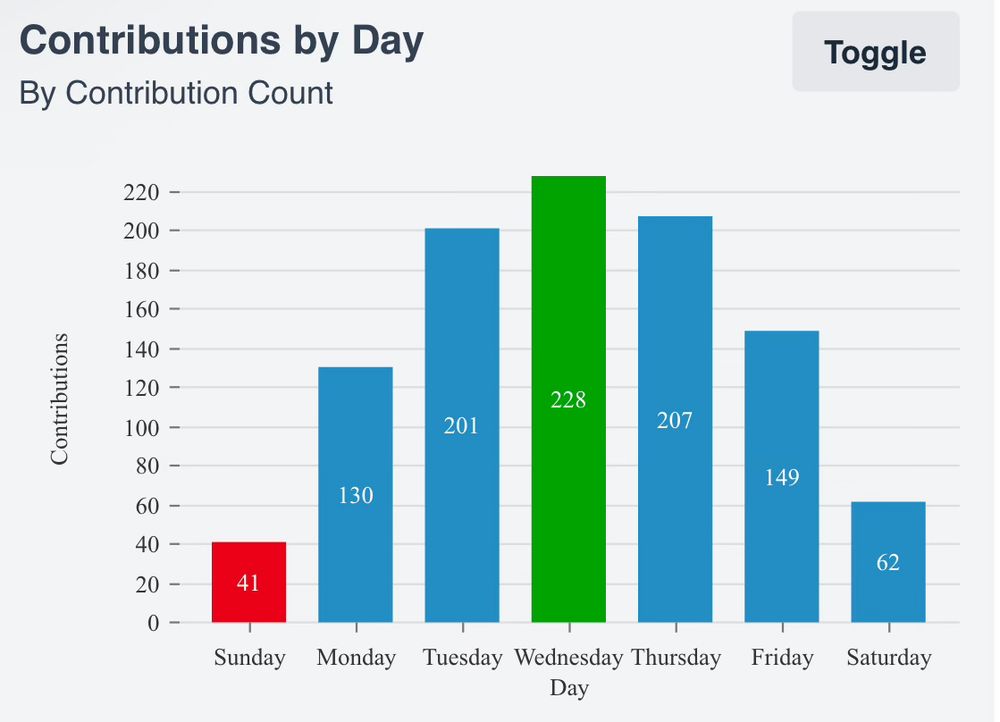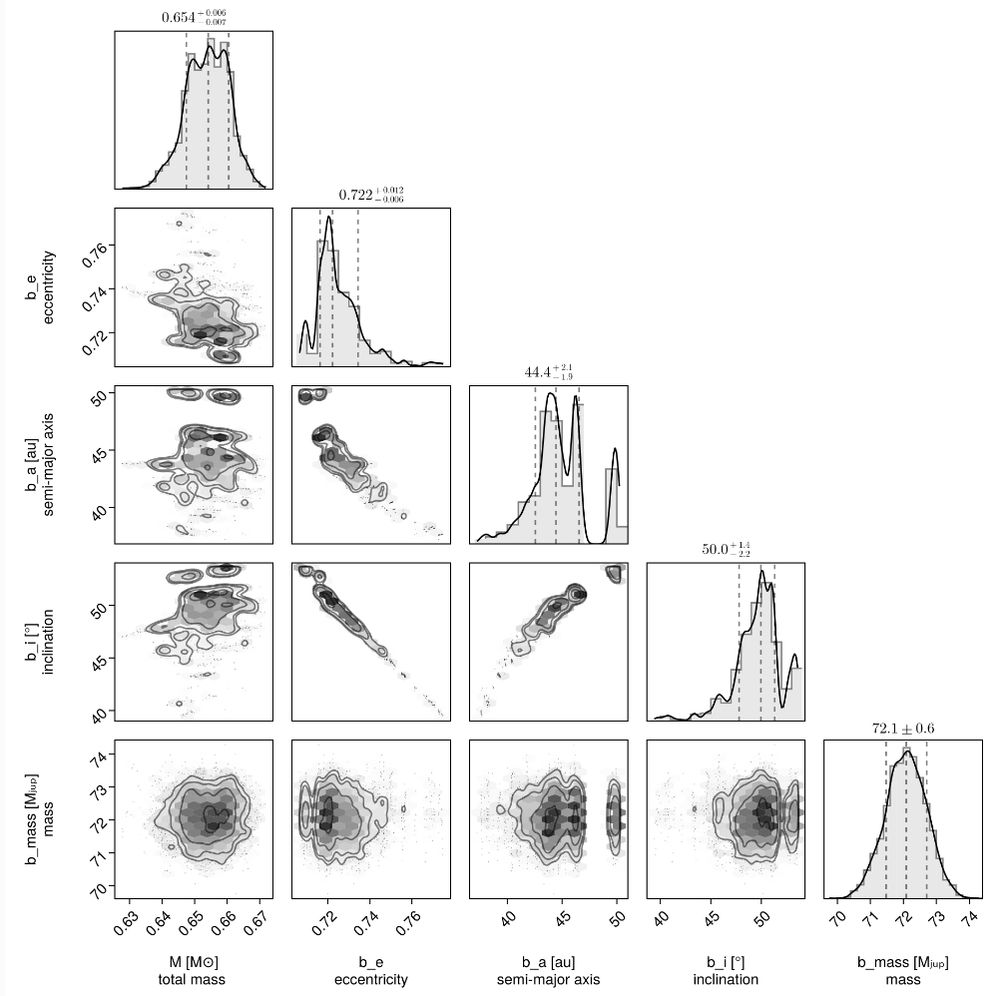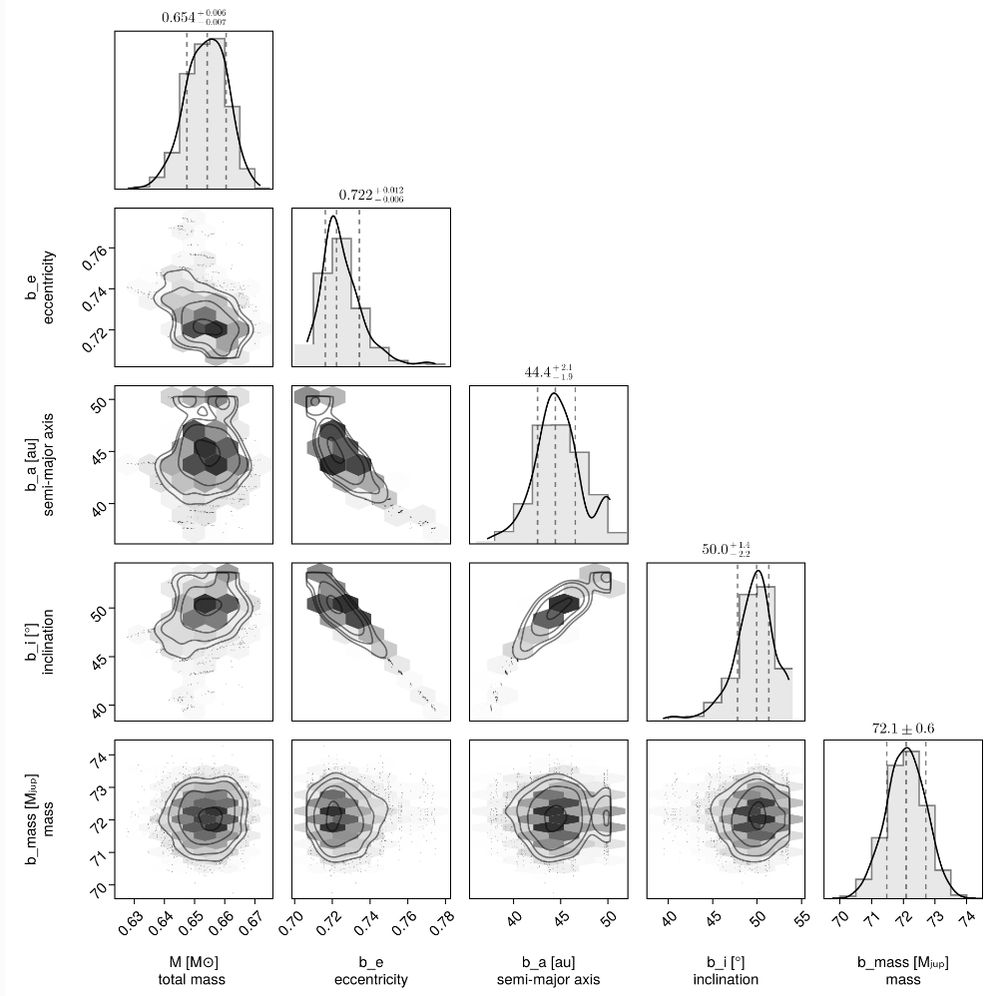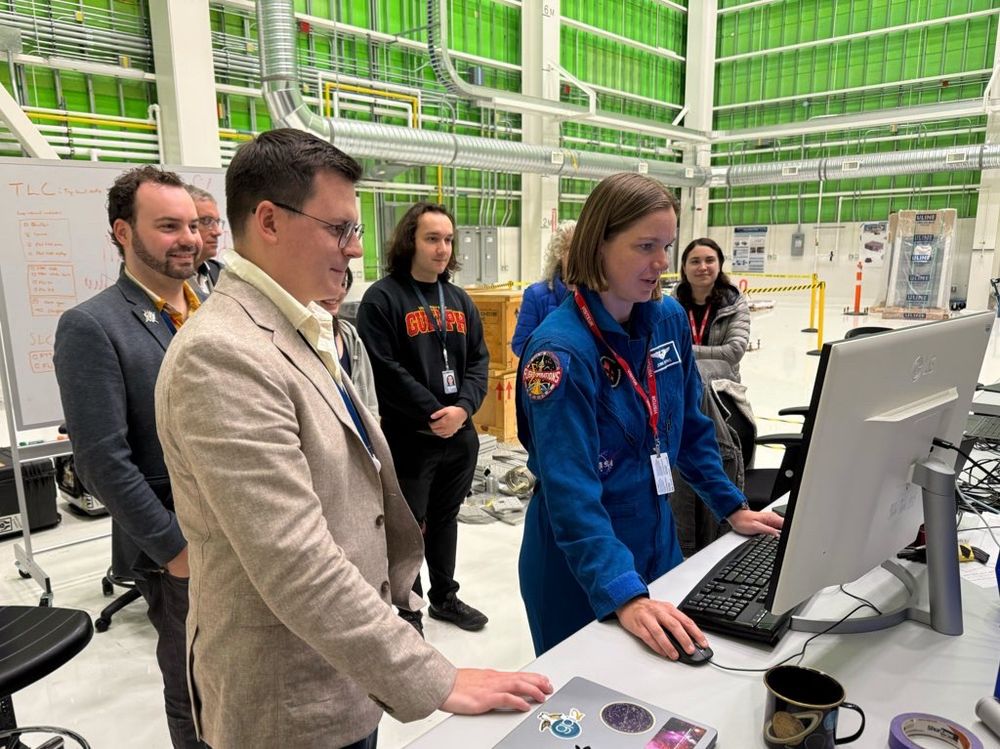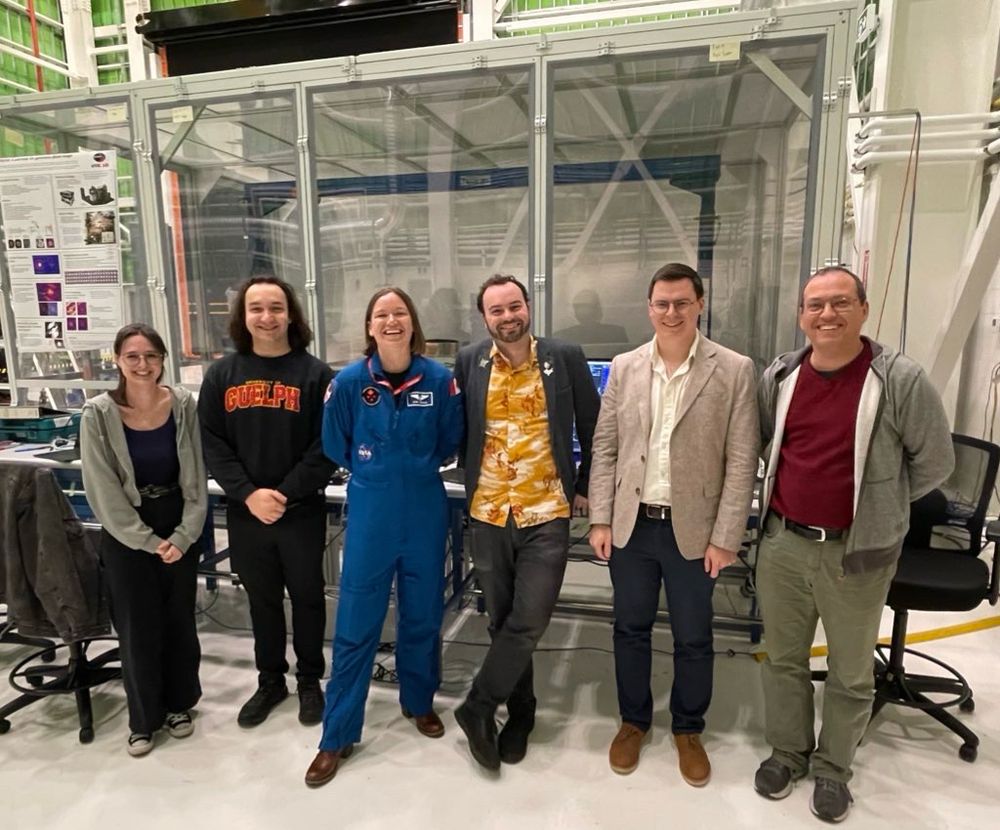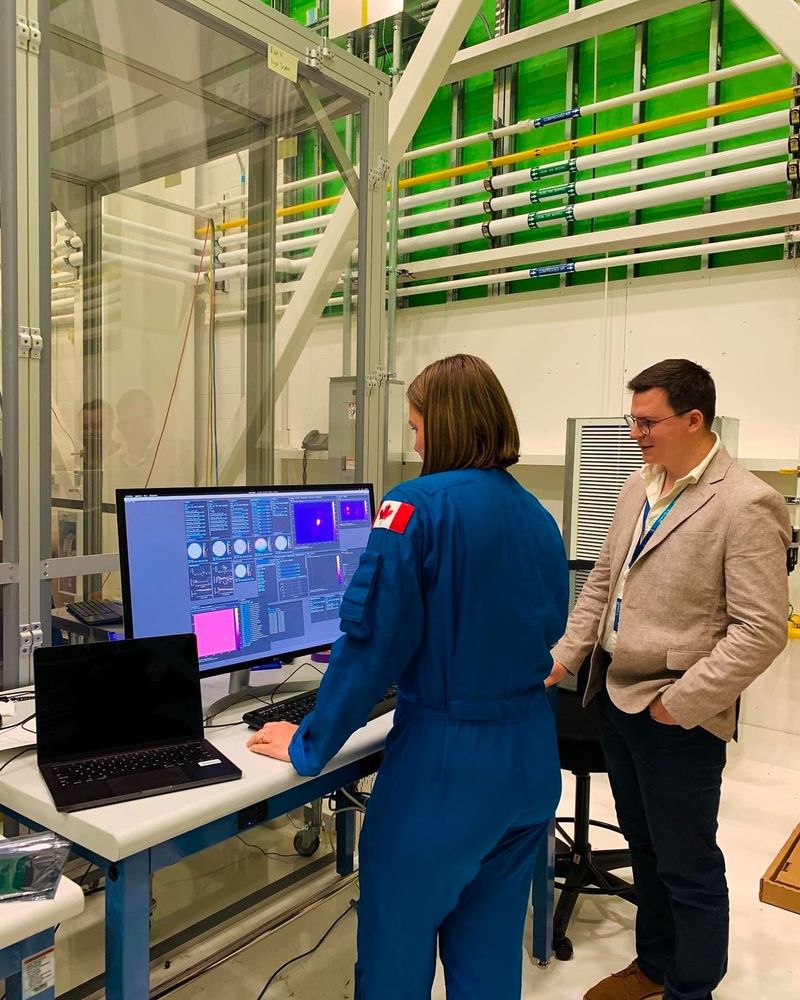William Thompson
Herzberg Instrument Science Fellow at the National Research Council in Victoria, Canada. Imaging exoplanets and writing #JuliaLang tools.
- Recent images from our SPIDERS pathfinder instrument demonstrating the self-coherent camera--next generation tech for direct imaging of exoplanets! We use a special coronagraph to interfere the starlight with itself, like a classic double slit experiment... [1/3] 🔭 #Instrumentation #exoplanets
- Are there any simulated planets in these images?
- Unfortunately no, although we used to have a little LED to act as a planet 😅 Now we just inject fake planets with software when we need to.
- Amazingly, this bright interference pattern is super robust to vibrations, atmospheric turbulence, etc thanks to a common-path design. Any physical vibration affects both arms of the interferometer equally, requiring no active vibration compensation. SPIDERS ships this fall! [3/3]
- Here's a bonus video of SPIDERS maintaining a dark hole in real time, despite simulated turbulence!
- Starlight can interfere with itself, but not with light from planets and disks, so fringed = speckle, and unfringed = planet (if within ~0.5" of the star, where the reference beam is). This lets us measure and remove speckles using our deformable mirror without any probing. [2/3]
- Thank you @fherwig.bsky.social!
- I learned today that am being awarded the J.S. Plaskett medal for most outstanding doctoral thesis in astronomy in Canada. Thank you @casca.ca.web.brid.gy, and my committee for the nomination! 🔭
- Thanks also to my external examiner Dr. Charles Beichman for his kind words: > it is the combination of innovative thinking, rigorous simulation and laboratory testbed results which make the work so impressive
- [Not loaded yet]
- Thank you!
- This is fantastic news. Upping grad and postdoc awards (both stipend and amount), and finally allowing non-Canadian/PRs to apply.
- Time for the promised thread on ε Eridani b! I should emphasize this manuscript is a submitted draft—comments from the community are very welcome. Bottom line: ε Eri b is likely a 1.0 Jupiter-mass planet, only 3.2pc away, on a 3.55 AU near-circular orbit, ~aligned with its debris disk. 🔭🪐🧪 [1/7]
- [Not loaded yet]
- Here are some individual draws from the posterior. I think any individual row should work. The angular parameters are in units of radians, period in years, tp in MJD (ps: plain text copyable version in the alt-text). We'll post the full posteriors and reproducible scripts once accepted.
- Part of our work was independently confirming the orbital period using only absolutely astrometry for the first time— no RV. The periods line up perfectly. This planet is real or I’ll eat my hat!
- The stars photocentre is apparently moving by more than the radius of the star, and in sync with the RV. It’d be hard to explain that away with stellar activity IMO.
- ...but I hope that the story of the system, the study of all these legacy datasets, and discussion on previous results are interesting too. This paper has been a joy to write and has challenged me to learn more than I ever expected to, going in. Thanks for reading 🙂. [7/7]
- Oops, I forgot the arXiv link 🤦♂️ arxiv.org/abs/2502.20561
- [Not loaded yet]
- Thanks!
- [Not loaded yet]
- Some day, I hope! There are still no confirmed “exomoons.” An easier case would be a much younger planet that is still glowing much brighter. More light would make those kinds of signals easier to detect.
- [Not loaded yet]
- Fingers crossed; it’s been long-anticipated
- [Not loaded yet]
- I imagine they might, but that wasn’t something we looked at in this work. I hope a modeller will take this work and use it to study those exact questions!
- [Not loaded yet]
- Ah, that’s great to hear. I’d noticed the false positives recently. Thanks for the heads up!
- [Not loaded yet]
- Thank you!
- We've been cooking up some fun new results for the planet Epsilon Eridani b! Submitted and should be on the arxiv by Monday. In the meantime, here's a couple teaser figures :) 🪐🔭🧪
- Draft is up: arxiv.org/abs/2502.20561 Full thread soon!
- We are now able to predict the planet's location to a narrow region on any given date. This figure shows how these predictions depend on the different data sources included. [5/7]
- The headline result is that the planet looks like a remarkable analogue to our own planet Jupiter, having nearly the exact same mass, orbiting a near-Sun-like star (0.8 M_sol), more-or-less co-planar with its debris disk, and receiving about 80% of the same stellar flux as Jupiter.... [6/7]
- There's been lots of interest in this planet in the intervening years, of course. Now with JWST, we hope that an imaging detection is near! In anticipation, we've updated the orbit based on a full 40 years of RV data, and astrometry from Hipparcos, Hubble, Gaia DR2, and DR3. [3/7]
- We dig through all available data taking care of various systematic effects. My favourite effect we found is that the planet has moved 19.5 light hours further away since the 1980s. It turns out that we need to account for the changing light-travel time to get the right answer! 🤯🤯 [4/7]
- The first hints of ε Eri b, also known as "AEgir," were reported in 1995 by Campbell, Walker and Yang based on RV data from CFHT in the 80s, then confirmed with RV by Hatzes+ in 2000, and with the addition of Hubble absolute astrometry in 2006 by Benedict+ (see fig.) [2/7]
- [Not loaded yet]
- Thanks @mattkenworthy.bsky.social!
- [Not loaded yet]
- Yes indeed! We find a mutual inclination of 10 ± 7 °. My money is on them being close to co-planar, and this small signal comes from systematics in the astrometry or disk models. But only time will tell for sure.
- Stabilized variational non-reversible parallel tempered sampling—this MCMC can handle just about anything you throw at it! pigeons.run 🧪
- [Not loaded yet]
- [Not loaded yet]
- My favourite historical trivia is that the Ra and Dec axis is backwards because it was invented before the graph
- Hah, I spoke to soon! Now accepted to AJ 🪐
- Perhaps a little premature since it's still under review, but I'd like to share a couple results from our preprint now up on the arXiv: arxiv.org/abs/2502.05359 🔭 We dive deep into the orbits of the binary brown dwarf companion 🪐 GL229 Ba / Bb newly discovered this fall by Xuan et al. [1/4]
- Perhaps a little premature since it's still under review, but I'd like to share a couple results from our preprint now up on the arXiv: arxiv.org/abs/2502.05359 🔭 We dive deep into the orbits of the binary brown dwarf companion 🪐 GL229 Ba / Bb newly discovered this fall by Xuan et al. [1/4]
-
View full threadUltimately, we find that we can determine the dynamical mass of the binary pair independently from the inner orbit—and it agrees to better than 1% with the mass we find from the outer orbit... a great test of our ability to measure the masses of directly imaged planets! [3/4]
- Lastly we pin down the mutual inclination of the orbit of the Ba/Bb pair versus their orbit around the primary, A, at 31.0±2.5°
- First, we show that we can find a low SNR companion in the GRAVITY data despite the rapid orbital motion, and that orbit agrees near-perfectly with RV data. Very promising for planning future observations of faint, rapidly orbiting planets! [2/4]
- [Not loaded yet]
- Very nice read!
- [Not loaded yet]
- 🪐
- Very minor update to PairPlots that addressing some vexing typographical details in the margin credible limits. They now exactly match the font of the rest of the plot. Before VS after, plus multiple series now have limits printed. Yes, I’m probably a little obsessive…
- 🧪🔭 Attending AAS in DC this January? Join us at our introduction to Julia programming for astronomy workshop! #julialang
- [Not loaded yet]
- In person only, I’m afraid!
- So I know the central limit theorem is a thing, but can anyone explain why my daily # of GitHub commits follow a normal distribution centred on Wednesday?? #GitHubWrapped
- New version PairPlots.jl out now! We now calculate the effective sample size of your chains to determine the histogram binning and contour smoothing much more robustly. Before vs After:
- [Not loaded yet]
- It’s frankly unbelievable that this works! Makes it way more convenient to try out new PRs before they merge.
- [Not loaded yet]
- Great idea! I’d appreciate being added, thanks!
- AAS scheduled my dissertation talk (20 mins) and contributed talk (10 mins) in the same 1.5 hour session. Probably no one wants to hear me speak that much back to back, right?! Should I cancel?
- I got to meet real live astronaut Dr. Jenni Gibbons yesterday and give her a demonstration of our exo-🪐 imaging instrument SPIDERS! 🔭 #instrumentation
